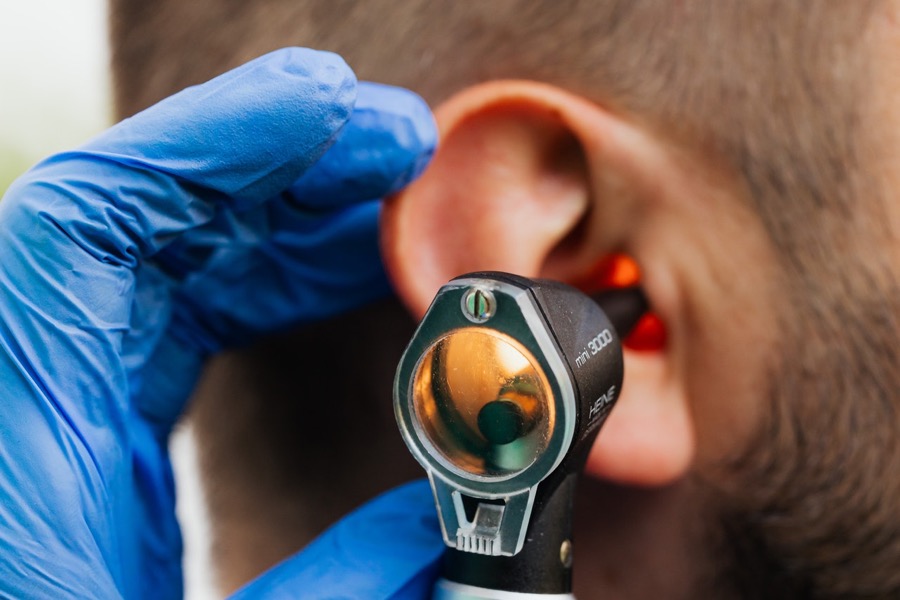Swimmer’s ear is an infection of the outer ear and ear canal that usually occurs after water has gotten stuck in the ear canal. It can be painful.
The medical term for swimmer’s ear is otitis externa. Swimmer’s ear is different than middle ear infections, known as otitis media, that are common among children.
Swimmer’s ear is treatable, and regular ear care helps prevent it.
Not just for kids and swimmers
Swimmer’s ear doesn’t discriminate — get it at any age, even if you don’t swim. Water or moisture trapped in the ear canal causes it, so showers, baths, washing your hair, or a humid environment is all you need.
Other causes include things stuck in your ear canal, excessive ear cleaning, or contact with chemicals like hair dye or hairspray. Eczema or psoriasis can make it easier to get swimmer’s ear. Ear plugs, earbuds, and hearing aids also increase the risk.

It feels like a bubble
Exactly. Swimmer’s ear feels like you have a bubble in your ear that muffles sound. It’s itchy and often accompanied by drainage from your ear. If you feel pain, visit your family doctor for treatment (often with topical antibiotics).
► Download Swimmer’s Ear Infographic
7 tips for preventing and treating swimmer’s ear
1. It’s the bacteria
The water stuck in your ear canal creates the ideal place for germs and bacteria to grow.
2. Essential earwax
Water in your ear can also remove earwax, attracting germs and fungi. Earwax is a beautiful thing! It stops dust and other harmful objects from going deep into your ears.
3. Clean ears, not wax-free ears
Earwax helps prevent infections. Don’t stick cotton swabs in your ears — they only push it closer to your eardrum. This can then affect your hearing. Remember, nothing smaller than your elbow in your ear.
4. Dry your ears
Use ear plugs, a bathing cap, or a wetsuit hood to keep water from getting in your ears — and dry your ears after swimming or bathing.

5. Get the water out
Tilt your head while pulling on an earlobe to straighten your ear canal. If you have trouble getting water out, try a hair dryer on a low setting held several inches from your ear until the ear feels dry.
6. See your physician
As soon as you suspect a problem, call your physician. Early treatment prevents the infection from spreading. If you have debris in your ear canal, they’ll remove it, so the antibiotic drops get to the infection. A 7 to 10-day course of ear drops usually clears up swimmer’s ear. Your physician may recommend ibuprofen or acetaminophen to relieve pain.
7. Dry ears for 7-10 days
Keep your ear as dry as possible for 7 to 10 days when treated for swimmer’s ear. Baths instead of showers, and avoid swimming and water sports.
► Download Swimmer’s Ear Infographic
Need help?
If you're in our service area and have questions about your hearing, email or call us, and we'll get you in touch with one of our audiologists.

